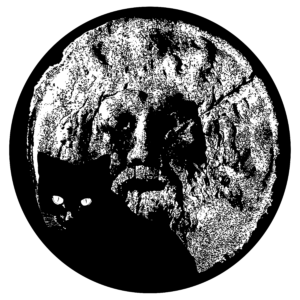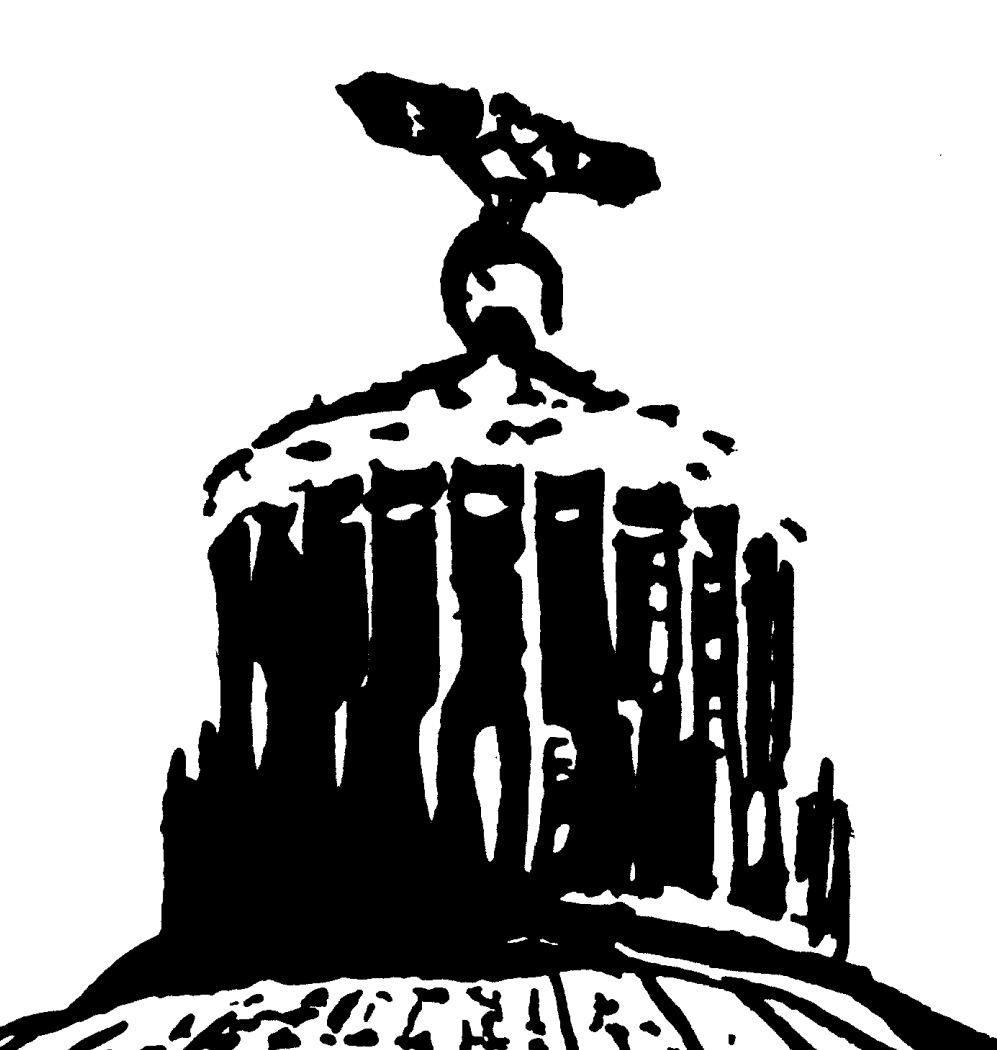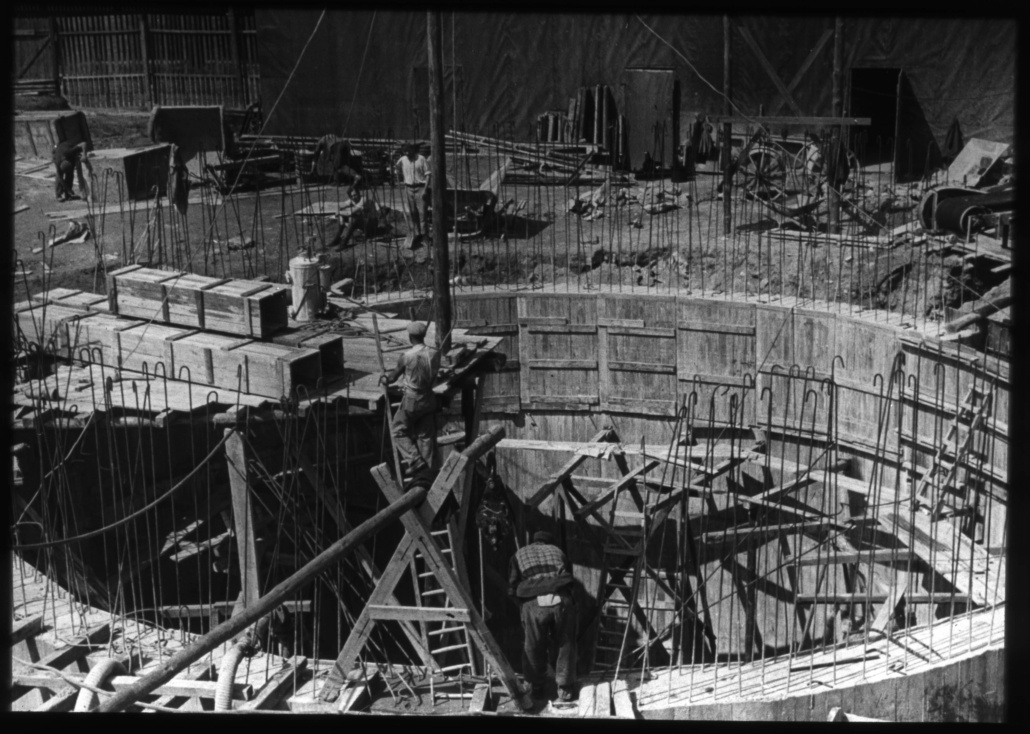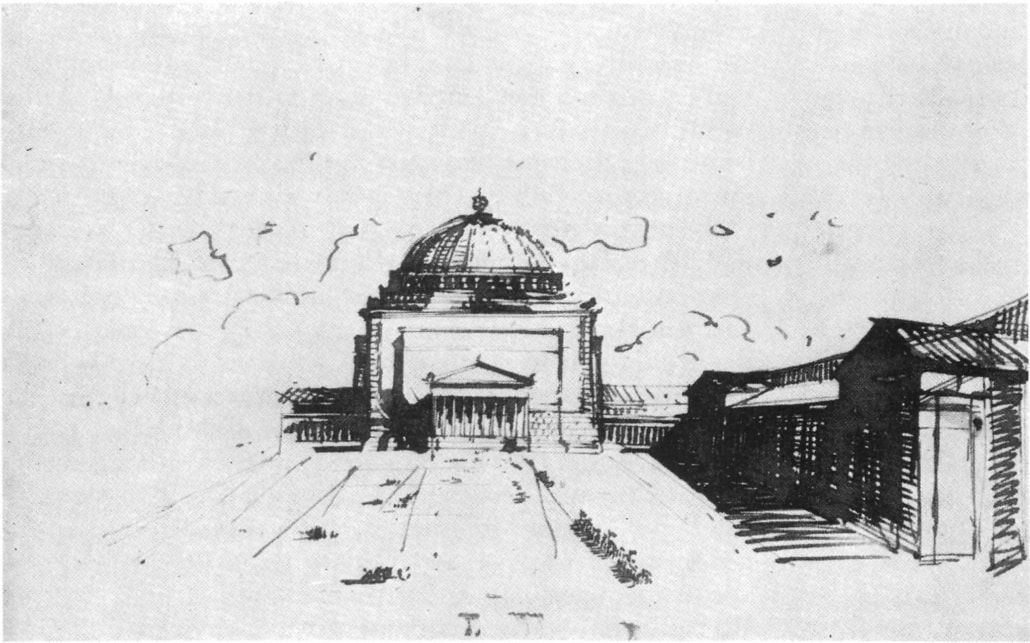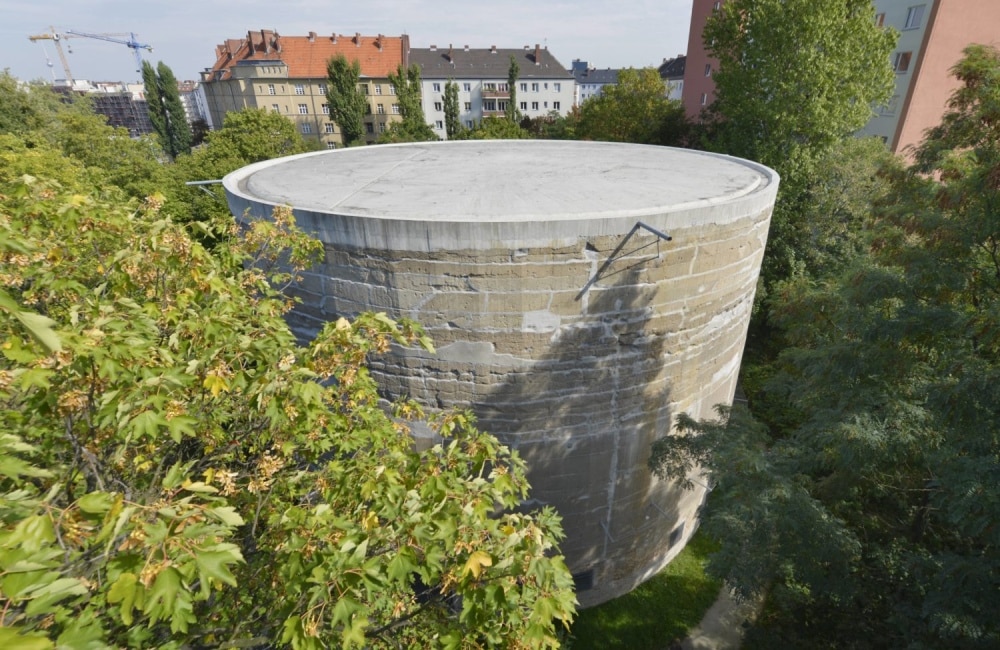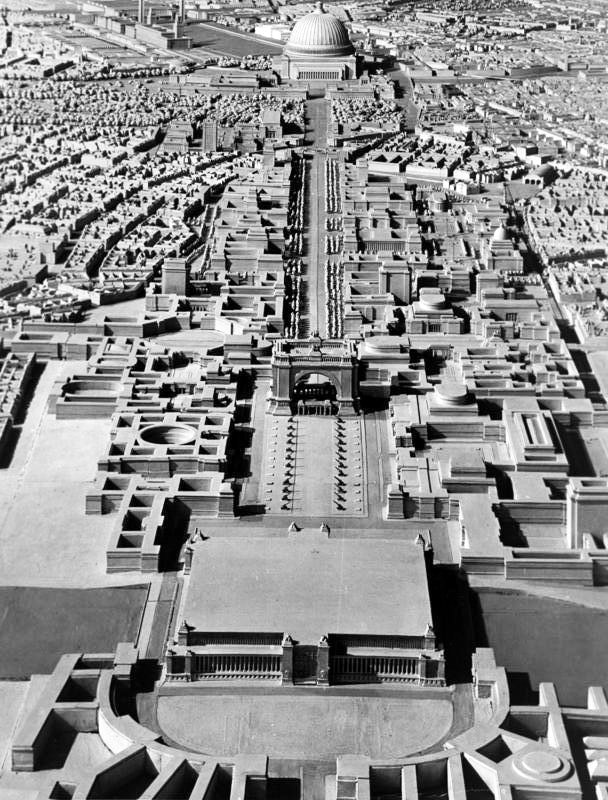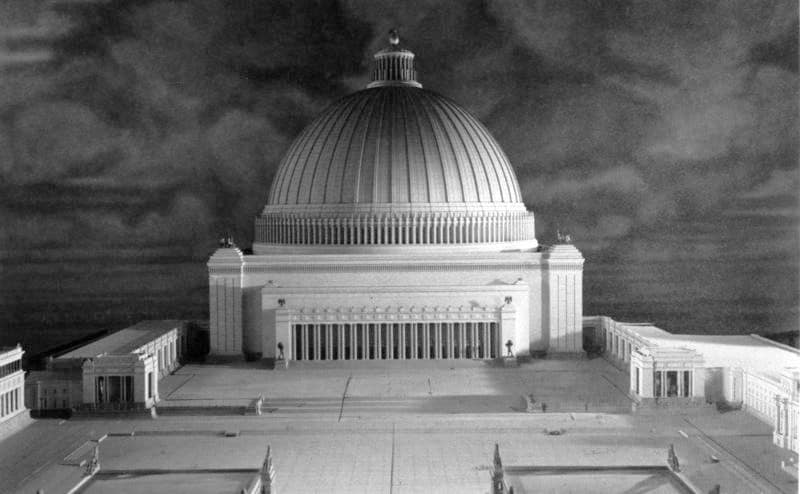“Testing Germania, 1941-1944 (Berlin)”, Alexandre Mitchell, 2022 (42 x 59cm, Indian ink)
Berlin is a vast and complex city, haunted by a chequered past.
What is most intriguing to visit is the unrealized capital that peeks through the cracks of the modern city. Hitler and his architect Albert Speer intended to turn Berlin into a symbol of the Reich. But their vision of the new city (later called Germania) was truly megalomaniacal.
The dome of the Volkshalle, or People’s Hall, would have been of titanic proportions, with a height of 290 m, and would have been able to accommodate almost 200,000 people. Albert Speer was methodical; he had the load-bearing capacity of the ground tested to see whether it could bear the weight of the planned works. A 12,650-tonne concrete load-bearing cylinder, or Schwerbelastungskörper, was built by French prisoners of war. The test consisted in measuring how many centimetres the cylinder sank into the ground over time. If the cylinder sank less than 6 cm, they could start building. Germany’s defeat put an end to Hitler’s vision of this vast city as a symbol of his eternal Third Reich. All that remains is a heavy, ugly concrete cylinder. It cannot be demolished due to its proximity to railway lines and residential buildings. Some people have tried to turn it into a wall-climbing club or a café, but these options have proved unsuccessful. In the end, it serves no purpose other than to remind us of what could have happened and what did happen.
Further reading
- Connolly, K., ‘Story of cities #22: how Hitler’s plans for Germania would have torn Berlin apart’, The Guardian, 14/04/2016. | online
- Albert Speer and Germania: The History of Nazi Germany’s Lead Architect and His Plans for a Future German Capital, Charles River Editors, 2021.
- Kitchen, M., Speer: Hitler’s Architect, Yale University Press, 2015.
- Krier, L., Albert Speer: Architecture, 1932–1942. Archives D’Architecture Moderne, 1985.
